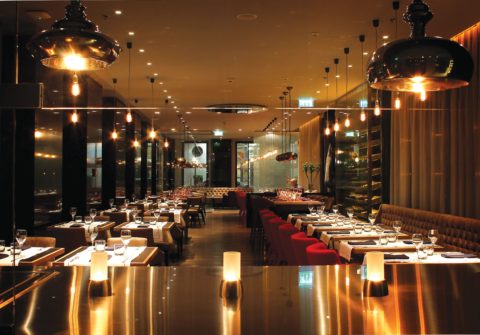Budapest Is the Most Underrated Vacation Destination for Wine Enthusiasts
In Budapest, cultural landmarks of the Hungarian capital—the Great Market Hall, the Danube River and Saint Stephen’s Basilica—whiz past the window of my vehicle. But I’m headed for Etyek, a wine region located 45 minutes west of the city, to sample some of the underrated wines on the market today.
Etyek is home to about 120 wineries, and most of them produce white varietals, including Törley, a sparkling wine you’ve likely spotted on shelves at your local liquor store. While this winery has an impressive output—a whopping 12 to 14 million bottles a year—it’s at smaller, family-run operations where you can sample wines unique to this part of the world and meet winemakers passionate about restoring the industry to its former glory. Natural wine isn’t a trend here; slow-fermented, small-batch, barrel-aged wine is a matter of tradition—a tradition that persevered through the country’s 40-year Communist era, in backyards and basements.
Local tourism company City & Wine offers day trips to Etyek, with afternoon tours of three wineries. Our first stop is Anonym Pince, where we sample fruity Sauvignon Blancs, light, easy-drinking Pinot Noirs and a big, oaky Chardonnay.
“Hungarian winemaking has 2,000 years of history,” explains Gábor Nagy, owner of Gradowski Estate, the second stop on our tour. “There’s a saying in Hungary: ‘You can criticize my wife, you can criticize my food, but please never criticize my wine.’” Nagy operates a tasting room and restaurant in the region, where guests can sample wines from his family’s vineyard in nearby Szekszárd, which is known for its reds made from the Kadarka grape. As he fills our glasses with a Kadarka wine from 2016, Nagy tells us about the grape’s rich history. The varietal, which is difficult to grow because it’s susceptible to disease, was cut down and replaced with high-yield grapes during the Soviet occupation of Hungary. Prior to Communism, 60 per cent of the country’s vines were Kadarka; by 1990, it had dwindled to 1 per cent.
“I think 99 per cent of the production during that time was not wine but a violet-coloured alcoholic liquid,” he explains. “I remember my father pouring these ‘wines’ into the toilet.” Reviving this forgotten grape has been Nagy’s life’s work.
At our final stop, Kálmán Debreczeni—one half of the husband-wife duo behind Debreczeni-Ferenczi—invites us inside their home for a traditional Hungarian dinner of chicken paprikash. All the vintners we meet exude the same stringent commitment to quality over quantity. They’re also patiently passionate about their work. “Everything is changing now,” says Nagy. “But we have to wait for the first productions of these vineyards, so please come back, let’s say in five years, and we can taste again.” Till then.
Once you return from your country side food-and-wine tour, here are three of the best ways to spend an evening in the city of Budapest.
The post Budapest Is the Most Underrated Vacation Destination for Wine Enthusiasts appeared first on FASHION Magazine.


